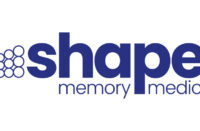FREMONT, Calif.–(BUSINESS WIRE)–Shockwave Medical, a pioneer in the treatment of calcified cardiovascular disease, today reported positive results from the DISRUPT BTK Study, which were presented at the annual Cardiovascular and Interventional Radiological Society of Europe (CIRSE) congress in Copenhagen, Denmark.
DISRUPT BTK, a prospective single arm study, evaluated the use of the Shockwave Medical Lithoplasty System as a treatment for peripheral artery disease (PAD) patients with calcified lesions in arteries below the knee. The study enrolled 20 patients at three sites in Europe and New Zealand.
“The results of this study are consistent with findings from previous studies of Lithoplasty, showing a low rate of residual stenosis with minimal complications in a predominantly critical limb ischemic patient population,” said Marianne Brodmann, M.D., of the Medical University of Graz, Austria. “These results suggest that the Lithoplasty treatment has the potential to address challenges that calcified stenosis pose below the knee, where calcium is more prevalent and different than above the knee. It can occur deeper in the artery wall, making these lesions more difficult to treat. Treatment failure can pose heightened risks for patients with critical limb ischemia, including higher risks of amputation and death.”
The study enrolled patients with moderate or severe calcified lesions in below the knee arteries, including 80% of patients who were classified as having critical limb ischemia. Acute performance results showed low percent residual stenosis (27%) with low vascular complications, including no perforations, distal embolization, reflow complications or abrupt closure and only one grade B dissection. There were no major adverse events including death, myocardial infarction, target limb revascularization or amputation through 30 days.
The Lithoplasty System is an innovative therapy designed to treat calcified leg artery blockages with lithotripsy, sonic pressure waves historically used to treat patients with kidney stones. The technology is now commercially available in both the United States and Europe for the treatment of calcified plaque in peripheral arteries.
“Interventional procedures that involve moderate and severe calcium can be complex, unpredictable and costly. The previous DISRUPT PAD Study demonstrated that Lithoplasty addresses many major concerns in the treatment of problematic calcium in femoral and popliteal artery lesions, achieving a high acute gain in vessel diameter with minimal dissections, embolization, perforation or recoil,” said Doug Godshall, CEO of Shockwave Medical. “DISRUPT BTK now gives clinicians encouraging data in a high risk patient population where calcific lesions pose different treatment challenges including the potential for limb loss.”
PAD blocks blood flow to the legs and feet, causing significant pain and limited mobility, potentially leading to surgery or even amputation in patients presenting with critical limb ischemia. PAD occurs primarily in the legs, and is caused by the buildup of plaque and calcium within the walls of arteries. Balloon angioplasty, which involves inflating a balloon within the artery at the area of narrowing and expanding the artery to alleviate the blockage, is commonly used to treat PAD. Many patients with critical limb ischemia do not respond well to angioplasty alone with blockages reoccurring in 40 percent of the cases, frequently requiring re-interventions and limb amputation.
About Shockwave Medical’s Lithoplasty® System
Shockwave Medical’s Lithoplasty System integrates angioplasty balloon catheter devices with the calcium-disrupting power of sonic pressure waves, known as lithotripsy. Each Lithoplasty catheter incorporates multiple lithotripsy emitters activated with the touch of a button after the integrated balloon is inflated. Once activated, these emitters produce therapeutic sonic pressure waves that are inherently tissue-selective, passing through the balloon and soft vascular tissue, preferentially disrupting the calcified plaque inside the vessel wall by creating a series of micro-fractures. When the calcium has been modified, the vessel can be dilated using low pressures, thereby enabling even historically challenging PAD patients to be treated effectively with minimal injury to the vessel.
The Peripheral Lithoplasty System is commercially available in both the United States and Europe and is intended for lithotripsy-enhanced balloon dilatation of lesions, including calcified lesions, in the peripheral vasculature, including the iliac, femoral, ilio-femoral, popliteal, infra-popliteal, and renal arteries. Not for use in the coronary or cerebral vasculature.
The devices used in the DISRUPT BTK study are not available or approved for sale in the United States.
To view an animation of the Lithoplasty System visit http://shockwavemedical.com.
About Shockwave Medical
Shockwave Medical, based in Fremont, Calif., is working to reshape interventional therapy with Lithoplasty® Technology for the treatment of calcified peripheral vascular, coronary vascular and heart valve disease. For more information, visit www.shockwavemedical.com.
for Shockwave Medical
Sierra Smith, 408-540-4296
sierra@healthandcommerce.com






